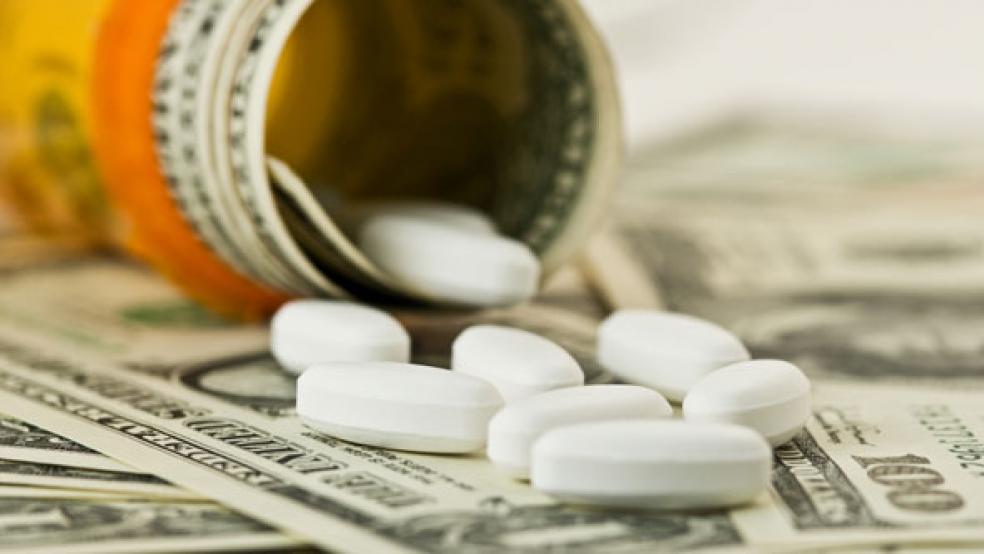From a global perspective, the cost to consumers and government agencies of prescription drugs in the U.S. is off the charts.
For instance, the Medicare Part B program earlier this year paid $1,936 for a vial of Lucentis used for treating macular degeneration, while the Norwegian government paid just $894 for the same drug. The U.S. health system meanwhile paid $3,678 for a vial of Rituxan/MabThera, which treats rheumatoid arthritis, while England’s health service paid $1,364.
While the Medicare program had to shell out $685 for a vial of Avastin, a cancer drug, the Canadian government in Ontario was spending only $398.
Related: Drug Company Profits Soar as Taxpayers Foot the Bill
According to a revealing report this week by The Wall Street Journal, the pharmaceutical industry is gouging the U.S. Medicare program and its millions of beneficiaries to maximize profits while providing drugs at bargain-basement prices to government agencies and consumers overseas.
In the case of Norway, The Journal found U.S. prices were much higher for 93 percent of top branded drugs available in both countries during the third quarter of 2015, with a similar pattern of price disparity in England and Canada’s Ontario province. Depending on the drug being purchased, those countries were paying only 28 percent to 60 percent of the cost incurred by the U.S.
“Throughout the developed world, branded prescription drugs are generally cheaper than in the U.S.,” The Journal concluded. Yet even with their huge discounts, not every European citizen gets the drugs they need or want. Rationing of drugs is common in Britain and other European countries.
Still, there’s a reason Medicare was stuck with the bill: It is not allowed to negotiate pricing by law.
The Advent of Biologics
Soaring U.S. prices not only fund most of the big pharma’s profits, they also help develop new medicines, including the more expensive biologics. This class of drugs is responsible for the spike in costs for a number of reasons.
First, U.S. News reported that even though only 2 percent of the population uses biologic drugs, biologics account for 40 percent of prescription drug spending in the U.S. Second, unlike chemical compounds, biologics are made using animal proteins and are more complex on the molecular level. As a result, it’s almost impossible to create generic medications, although “biosimilars” might someday be effective.
Third, a report from the National Academies funded by the National Institutes of Health said, “Approximately 10 percent of potential therapeutics that effectively pass preclinical development reach the market, and the cost for each is estimated to average from $100 million to more than $1 billion, depending on the disease and other factors and taking the cost of failed drugs into account…. According to one study of the 50 largest pharmaceutical firms, about one in six new drugs that entered clinical testing eventually received approval for marketing.”
Nevertheless, a good chunk of the money generated by the U.S. health care system to big pharma also funds massive marketing budgets, including consumer advertising on television, something that is not allowed in Europe and many other countries. According to The Journal, pharmaceutical and biotechnology companies in the S&P 1500 earn on average a net profit margin of 16 percent, compared with an average of about 7 percent for all companies in the index.
Related: Wonder Drugs Blow a $1 Billion Hole in VA’s Budget
The Journal report comes amid mounting concern that soaring drug prices in this country are posing risks to the health of many Americans. And because a questionable law imposed by Congress is saddling Medicare, Medicaid, the Department of Veterans Affairs [JL1] with huge new costs, it has led to the rationing of drugs in some states.
Initially, the public spotlight was on relatively new specialty drugs such as Sovaldi and Harvoni manufactured by Gilead Sciences, which can cost as much as $1,000 a pill retail to treat the potentially deadly virus hepatitis C. At the same time, however, scores of other lesser-known specialty drugs gaining in popularity have shown dramatic price increases in recent years. Indeed, the retail prices for widely used specialty prescription drugs ran well ahead of inflation every year between 2006 and 2013.
Two of the worst offenders, Valeant Pharmaceuticals International and Turing Pharmaceuticals, were presented with subpoenas or letters in September by prosecutors investigating their pricing practices and other aspects of how they do business.
Related: Cash-Strapped VA May Start Rationing Some Treatments
The pharmaceutical industry vigorously defends its price-setting practices, noting that the new biologics coming onto the market that save lives are costly to research, develop and market. Industry officials say that price controls such as those imposed in Europe discourage investment in research and keep important new drugs from patients. “The U.S. has a competitive biopharmaceutical marketplace that works to control costs while encouraging the development of new treatments and cures,” Lori Reilly, an executive at the Pharmaceutical Research and Manufacturers of America, told The Journal.
A newly released Senate report on the late-2013 deliberations of Gilead Sciences executives in marketing Sovaldi at the exorbitant price of $84,000 for a 12-week course of treatment showed that the company pursued a strictly profit-driven strategy despite warnings of consumer or government official backlash. The Washington Post first reported the findings.
Related: Costly Hepatitis C Drug Makers Face New Fire
“Let’s not fold to advocacy pressure in 2014,” Kevin Young, Gilead’s executive vice president for commercial operations, wrote in an internal e-mail,” according to the Senate report. “Let’s hold our position whatever competitors do or whatever the headlines.”
Sen. Ron Wyden (D-OR), who co-led that 18-month investigation with Sen. Chuck Grassley (R-IA), said the corporate documents show “it was always Gilead’s plan to max out revenue, and that accessibility and affordability were pretty much an afterthought.” Gilead disagreed with the government report, saying that the price was in line with previous standards of care.





